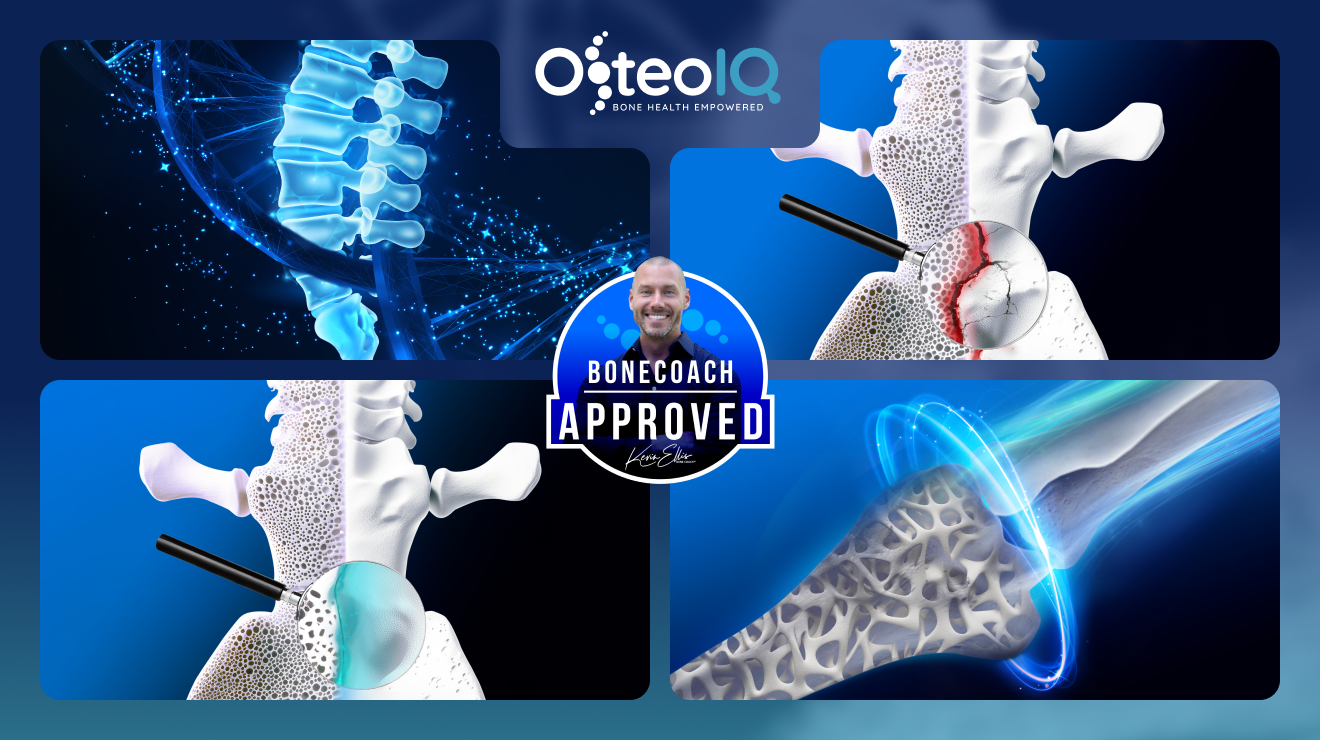Bone Health and Osteoporosis Podcast
How Stress and Brain Health Affect Bone Density w/ Dr. Louise Swartswalter + BoneCoach™
Bone loss doesn’t come from just one cause. Stress, mineral imbalances, hormonal shifts,...
Hidden Contributor to Osteoporosis & Nutrient Depletion: Parasites Explained w/ Dr. Jaban Moore + BoneCoach™
Could something living inside the body be quietly working against your bone health...
Hormones and Bone Loss: What Women Need to Know About Osteoporosis w/ Dr. Lorraine Maita, MD + BoneCoach™
Bones are living tissue. They respond to signals, not just nutrients.Hormones are some...
Why Prescriptions Alone Don’t Solve Bone Loss: A Look at Root Causes w/ Laura Frontiero, NP + BoneCoach™
Osteoporosis does not develop overnight.It builds from years of nutrient malabsorption, chronic inflammation,...
Autoimmunity and Bone Loss: What Chronic Inflammation Does to Your Cells w/ Elizabeth Yarnell + BoneCoach™
It often begins subtly through digestive changes, fatigue, immune flare-ups, or sensitivities that...
How the Stronger Bones Companies Are Redefining Osteoporosis Support w/ BoneCoach™ Kevin Ellis
If you’re working to rebuild your bone health but feel confused, frustrated, or...
Why Bone Density Isn’t Enough And What Actually Builds Strength w/ Kiran Krishnan + BoneCoach™
Bone loss does not begin with a DEXA scan. It begins quietly at...
Trying to Prevent Osteoporosis? This Calcium Mistake Could Raise Your Blood Pressure w/ Mark Young (Zona) + BoneCoach™
High blood pressure rarely shows up overnight. It creeps in slowly…through stress you’ve...
How Hormones Affect Bone Health After Menopause w/ The Girlfriend Doctor (Dr. Anna Cabeca) + BoneCoach™
Bone loss isn’t a calcium problem. It’s a communication problem. Your bones don’t...
Tooth Loss, Bone Loss & Aging: The Nutrient That Could Help Reverse Oral and Bone Health Decline w/ Kevin Ellis - BoneCoach™
Many women assume loose teeth, gum changes, and sudden dental problems are just...
Parasites and Poor Gut Health: The Missing Piece in Bone Density Problems w/ Sinclair Kennally + BoneCoach™
You’ve hosted guests you didn’t know you had. Not the kind that overstay...
What Really Happens to Your Body During Perimenopause w/ Dr. Mariza Snyder + BoneCoach™
When did your body stop feeling like yours? You wake up at 3...
Build Strong Bones.
Live Fearlessly.
Don’t let osteoporosis hold you back. Discover proven solutions to strengthen your bones, reduce fracture risk, and reclaim the active life you love.
Apply to work with
the Bone Coach™ Team
We've helped thousands of people with osteoporosis around the world address bone loss, build bone strength, prevent fracture and injury, and lead active lives.
Professional Grade
Supplements For Stronger Bones Support
Preserve and strengthen the structure
that's going to carry you to an active future. Get started
today and put your bone health on autopilot.
Osteoporosis Testing for Prevention, Monitoring, and Reversal
Discover the lab tests built to help you know if you are winning or losing the fight against bone loss. Know how to adjust in real-time to reach your bone strength goals.















